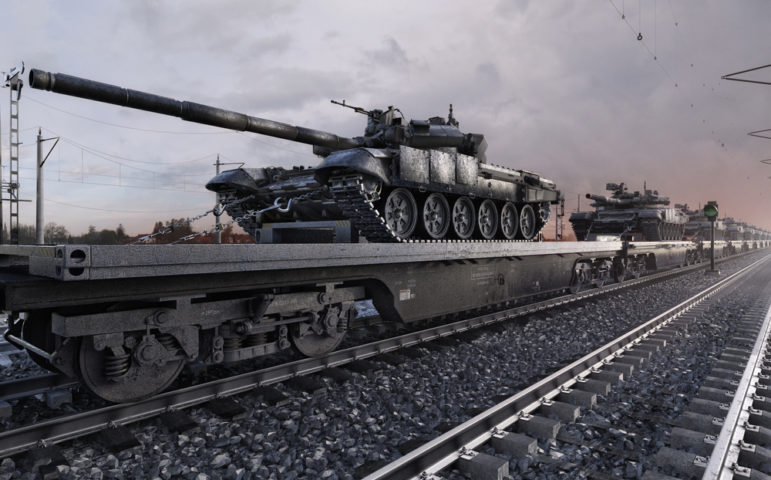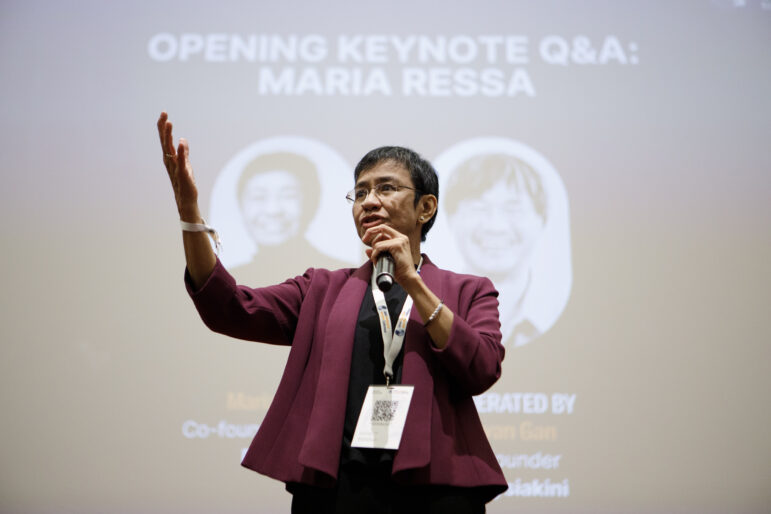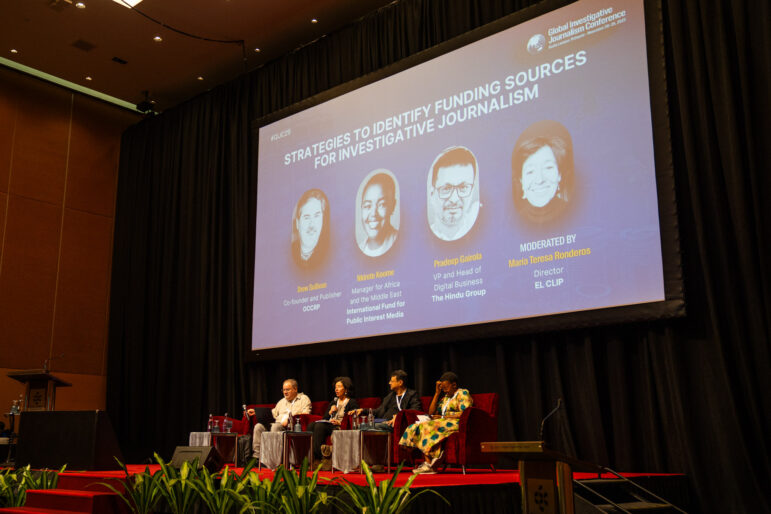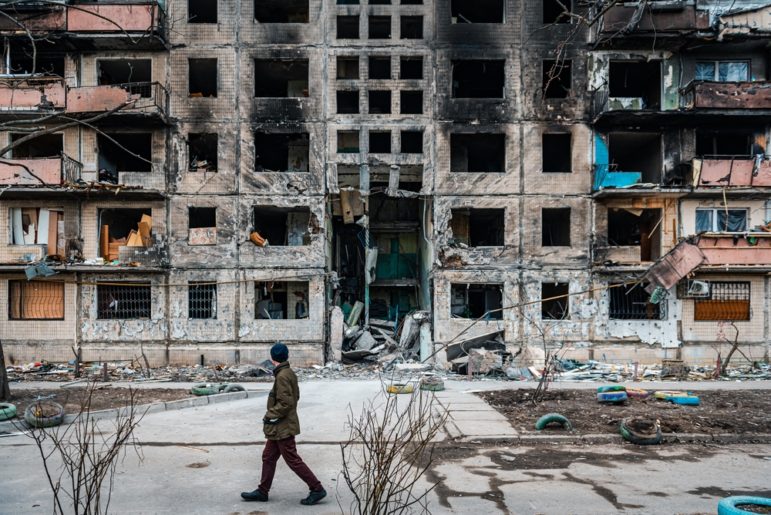

Valeriya Yegoshyna and Danilo Mokryk speak at the Uncovering War Crimes in Occupied Territories of Ukraine panel at GIJC25. Image: Samsul Said, Alt Studio for GIJN
Reporting on War Crimes in Ukraine’s Occupied Territories
Read this article in
“I’ll come and shoot you in the head, fuck you, if you call anyone from my brigade or my guys again.”
This provocative quote came from a Russian soldier, Stanislav Shmatov, and was told to Ukrainian journalist Valeriya Yegoshina. In this phone conversation, he confessed to her that he had fired on the homes of civilians in an occupied village in eastern Ukraine.
This was not the first time Yegoshina had heard such threats from Russian military personnel when she approached them for comments as a Ukrainian journalist.
Without access to the occupied territories, Ukrainian newsrooms have had to resort to creative tactics to cover the war there: combining OSINT, satellite imagery, intercepted conversations, Ukrainian law enforcement sources, eyewitness accounts, and fieldwork after de-occupation to document war crimes and piece together complete stories from scattered fragments of information.
Ukrainian journalist Viktoria Roshchina lost her life while attempting to investigate human rights violations in territories occupied by the Russian army. She died after being tortured in a Russian prison in 2024.
At the 14th Global Investigative Journalism Conference in Malaysia, Ukrainian investigative journalists from Schemes (a RFE/RL project), Suspilne (Public Service Broadcaster), and the Kyiv Independent shared their experiences in investigating war crimes in the occupied territories.
Tracking Down the Crimes of Soldier Shmatov
Investigating the crimes of Russian soldier Stanislav Shmatov in Ukraine, journalists from Skhemy began with an audio recording — a conversation intercepted by the Security Service of Ukraine, in which the soldier boasts about shelling residential buildings, torturing prisoners, and looting. The task was to determine where exactly he fought and which units were operating in that area.
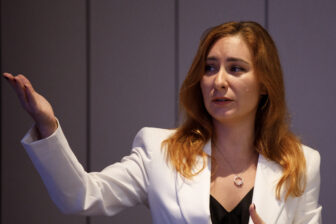
Valeriya Yegoshina, a journalist for Schemes, an investigative news project run by RFE/RL’s Ukrainian Service, speaking at GIJC25. Image: Samsul Said, Alt Studio for GIJN
The team combined various methods in its investigation:
- SIGINT (Signal Intelligence): An analysis of telephone traffic showed almost 70 calls from the soldier to his father, and linking to the base stations of mobile operators revealed the brigade’s route of movement.
- GEOINT (Geospace Intelligence): From the conversation, they obtained a description of the settlement — a “large village,” a railroad crossing it, a forest, a body of water, and about 15 pieces of heavy equipment. Those details helped narrow the search to the Borivska community in the Kharkiv region.
- Interviewing local people: The reporters asked the head of the Borivska village council to compare these descriptions with the community’s actual map; they identified the hamlet of Pisky-Radkivski with almost 100% certainty. At the end of the investigation, the authors called Shmatov, and he confirmed that he had tortured prisoners.
- Satellite imagery: Photos from the site confirmed the nature of the destruction described by the soldier: shelling of civilian buildings, artillery fire on the village, and destruction of houses along certain streets.
- Work in the field after the de-occupation: Journalists try to reach the scene as quickly as possible after occupying forces have left, to gather evidence and speak with residents.
Recreating a Complete Picture from Fragments
The documentary “Shadows Across the River” by the Kyiv Independent tells the story of a torture chamber for Ukrainian civilians that the Russians created in the village of Gornostaivka, in the Kherson region. Ukrainian journalists and investigative authorities receive many reports about what is happening in the occupied territories, but these are scattered fragments, as if covered in darkness. Those who remain there are afraid to speak out for fear of death. Those who have managed to leave are still fearful for the fate of their relatives still under occupation, since Russians are killing Ukrainians for even minor displays of patriotism.
- Collaboration with war crimes documentarians. To determine the extent of the terror, Mokryk joined the Truth Hounds war crimes documentation team to find witnesses. He traveled with them to southern Ukraine, to the refugee center where people from the occupied territories were arriving.
- First-hand interviews. The author managed to find relatives of people tortured in Gornostaivka who agreed to talk about how Russians killed their loved ones, threatened to rape them, and take their children away. Some witnesses had to be anonymized: journalists hid their faces and changed their voices using AI tools. People were afraid to speak out because their relatives remained in danger. The filmmakers interviewed witnesses to identify Russians who tortured Ukrainians in the occupied territories. But this was difficult because Russian soldiers wore masks and used call signs instead of names.
- Russian sources and OSINT. They found a lead on a Russian Telegram channel and on Russian television, which had mentioned the names of occupation police officers. Then, journalists used the testimony of Ukrainians and OSINT methods to study their activities in the occupied territories of Ukraine.
- “Undercover” calls. Mokryk reached out to a Russian soldier identified by the victims and purported to offer him support from a fictitious veterans’ organization. The soldier believed him and said that his torture of civilians had gone unpunished.
During this session, colleagues from other countries asked Ukrainian journalists whether they could remain independent while receiving information from the Security Service of Ukraine (SBU). However, Valeriya Yegoshina and Danylo Mokryk from the Kyiv Independent explained that the information they receive helps to expose war crimes. And they said that journalists using government info as a source does not prevent them from criticizing law enforcement agencies in their other investigations.
“Money smells, information doesn’t,” replied Mokryk, when he was also asked whether it is ethical to deceive Russian soldiers and extract information from them in undercover phone calls. “If I call him, introduce myself as a Ukrainian journalist investigating war crimes, and ask him for a comment, the best I’ll get is: ‘Fuck you.’ But I need information.” When communicating with residents of occupied territories who have lost loved ones or experienced abuse or torture, or are just afraid for their lives, Mokryk advised showing maximum sensitivity and trying to protect them and their relatives as much as possible. However, it is crucial to understand that journalists cannot promise complete safety.
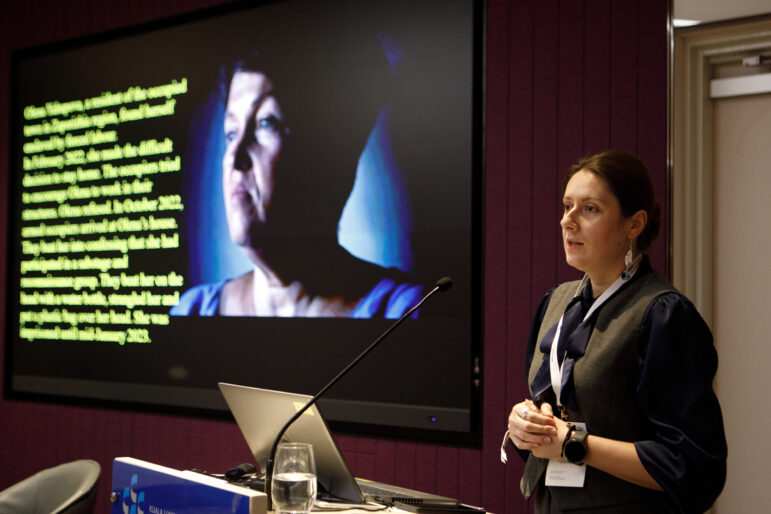
Alla Sadovnyk, editor with the investigative department at the Suspilne Public Broadcasting Company (Ukraine’s public broadcaster). Image: Samsul Said, Alt Studio for GIJN
Source Protection
Suspilne’s (Ukraine’s public broadcaster) methods of investigating events in the occupied territories, as described by Alla Sadovnyk, editor with the investigative department at the Suspilne Public Broadcasting Company, can be summarized as follows:
-
- Searching for reliable sources in the occupied territories through personal contacts to find people who can be trusted;
- Protecting sources: Journalists communicating with people in occupied territories use various anonymous accounts on different messaging apps, different phone numbers, and routinely delete messages. Witnesses to war crimes risk their lives by speaking out about what they have seen or experienced.
- Illustrations instead of photos. The story of a woman from the occupied territories, who Russian authorities threatened to take away her children if she did not send them to a Russian school, was told through illustrations. Journalists tried to find out as much as possible about her ans shared it only within the editorial office so that her testimony could be verified. But they then anonymized her in the publication.
- Videos from both sides of the front line. Journalists analyzed videos shot by the Ukrainian and Russian armies to investigate the attack on civilians by Russian drones. Journalists compared the landscape, the locations of houses and roads, and the directions of movement of people and equipment frame by frame. In this way, they established the circumstances of the crime.
- OSINT and a remarkable tattoo. Journalists identified a Russian soldier who forced civilians into slave labor by his tattoo after finding his photo on a dating website.
Collecting the Evidence
“Our investigations are like hunting shadows in the darkness,” concluded Mokryk. he added that the final accounting of Russian atrocities in Ukraine will only be fully revealed after the de-occupation of these territories and the restoration of access to them by the Ukrainian police and independent journalists. “ Journalistic investigations of the war crimes in the occupied territories are now essential to inform the audience as well as create a database of documented evidence that will be important for investigators, prosecutors, and international courts in the future.”
Editor’s Note: Oleg Khomenok is a member of GIJN’s Board of Directors and contributed data, context, and editing to this story.
Inna Gadzynska is a Ukrainian journalist with nearly 20 years of experience in print and online media. She worked as a media trainer for almost 8 years, conducting trainings on storytelling and editorial workflow. Since 2019 she has been working as an editor at the Ukrainian data journalism newsroom Texty.org.ua. Gadzynska was among the nominees of the European Press Prize for innovations in 2024, and among the winners of the Ukrainian national competition Honor of the Profession in 2023. Gadzynska also worked as an associate regional editor at GIJN in 2019.



